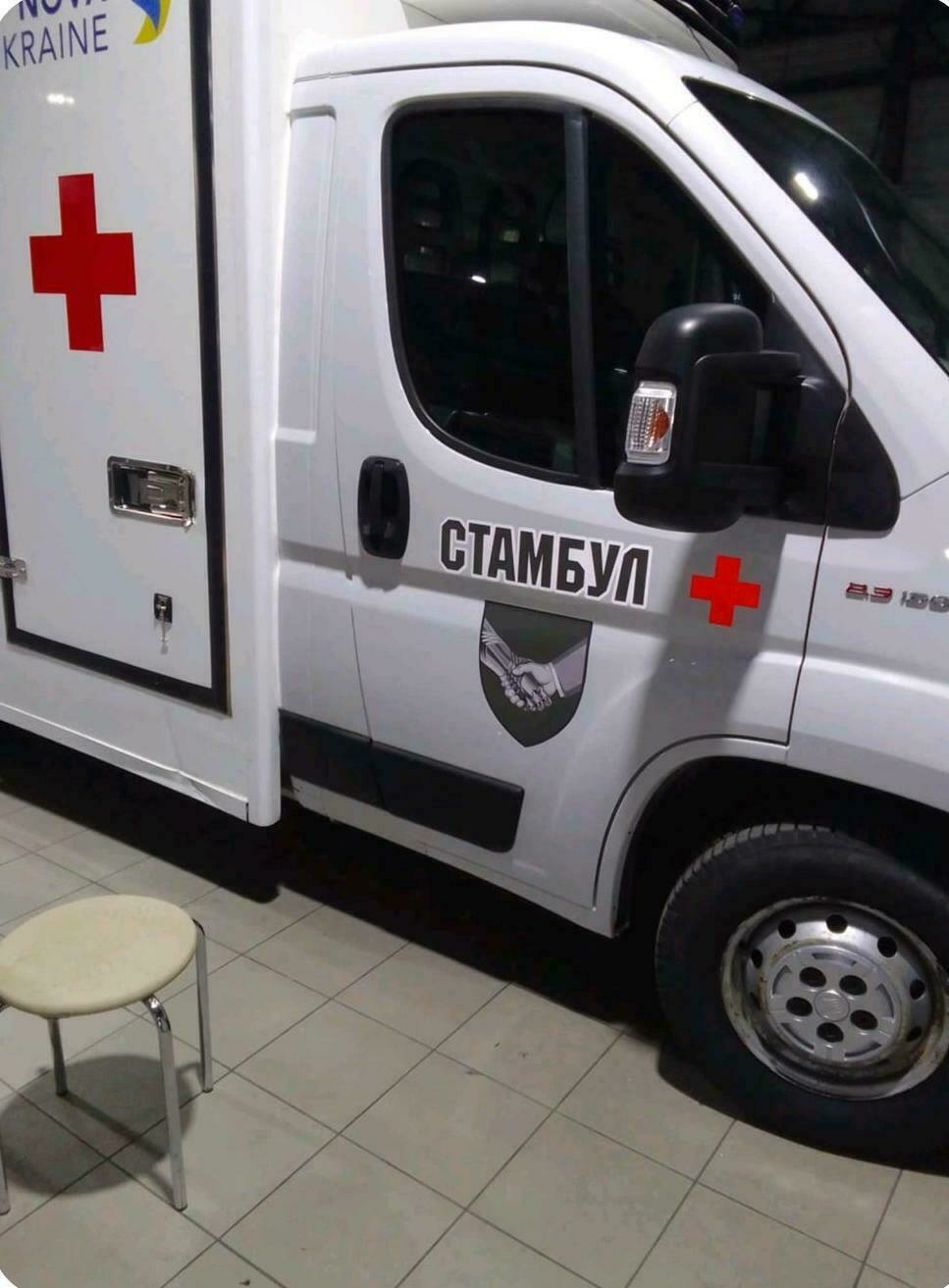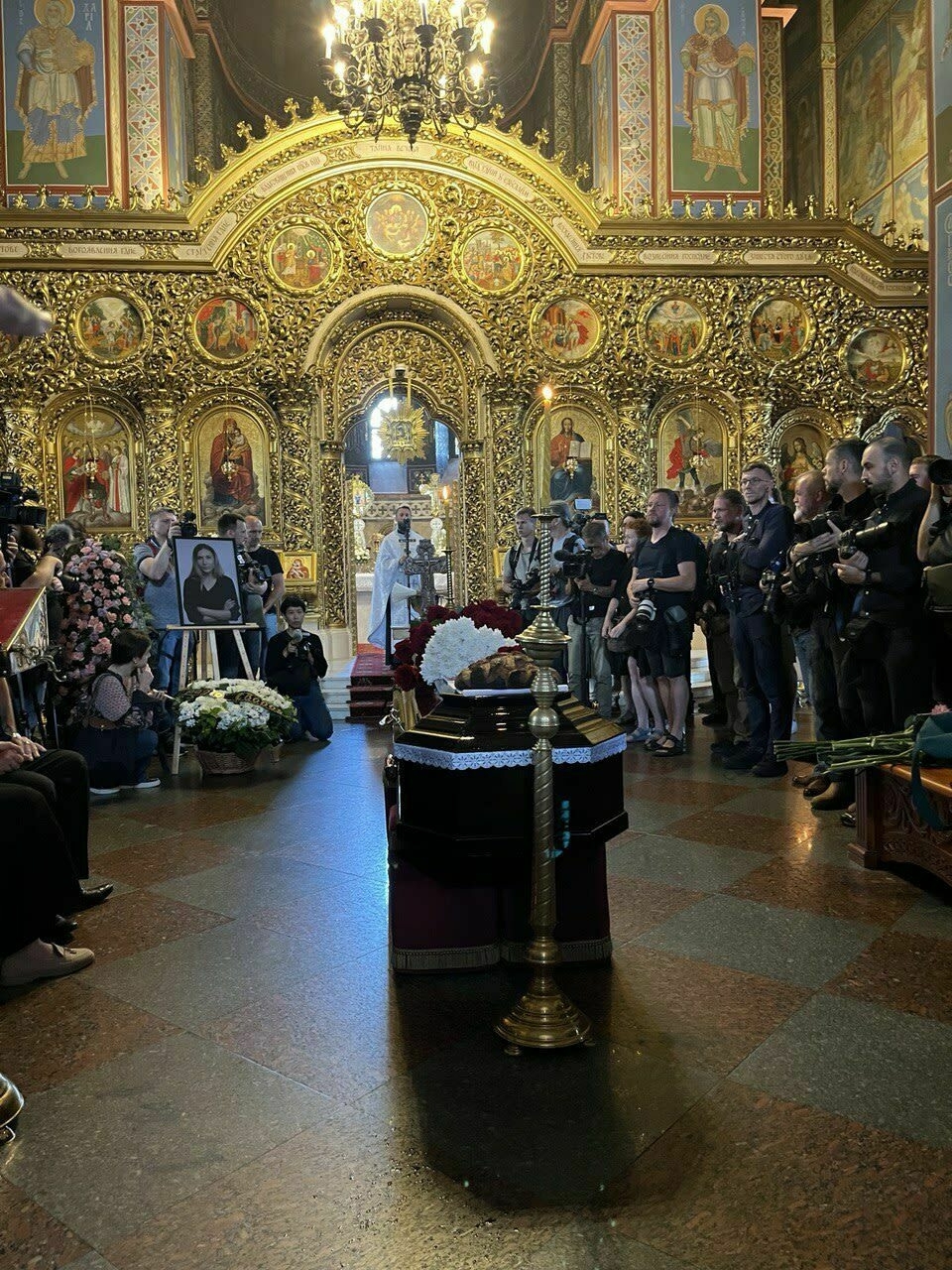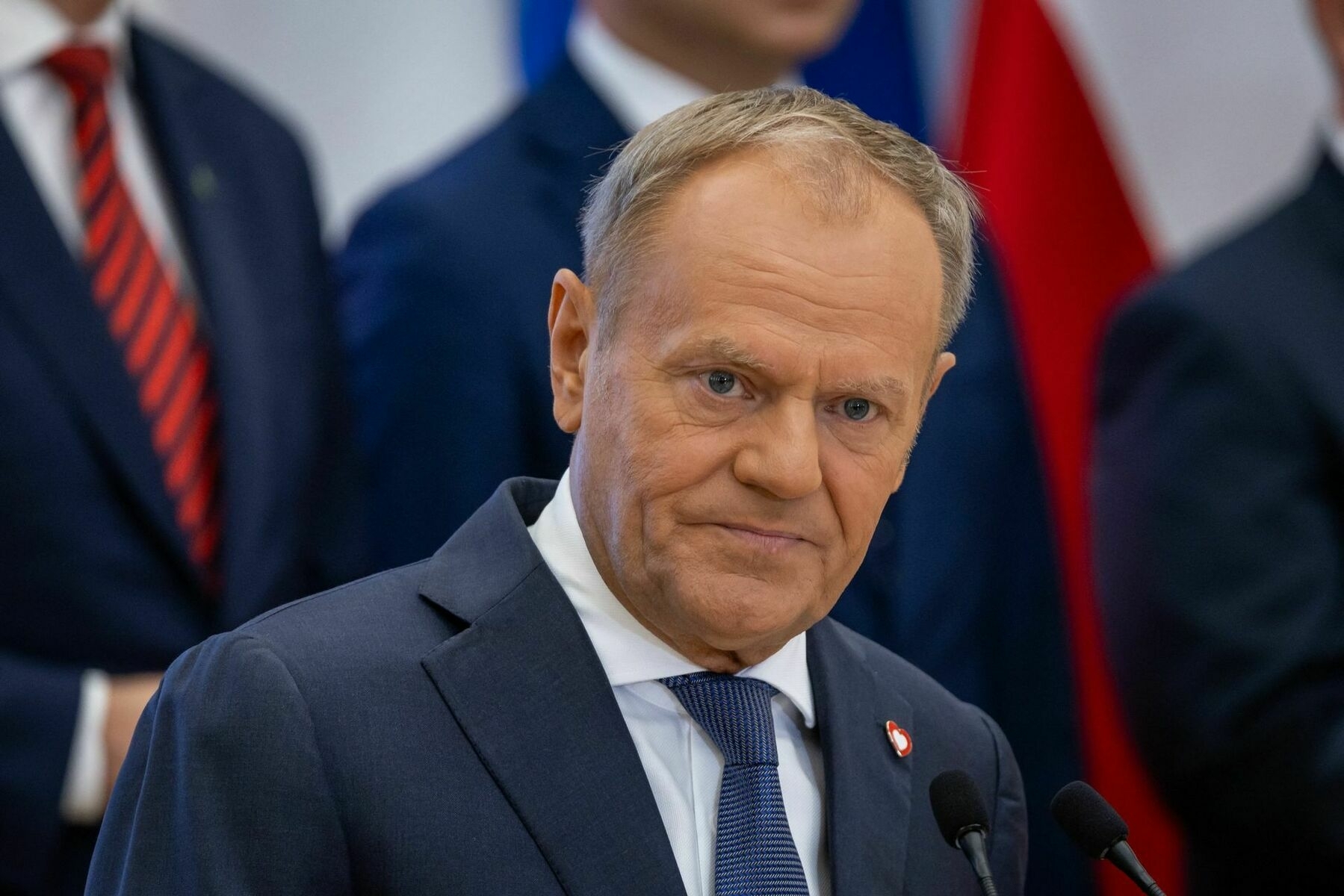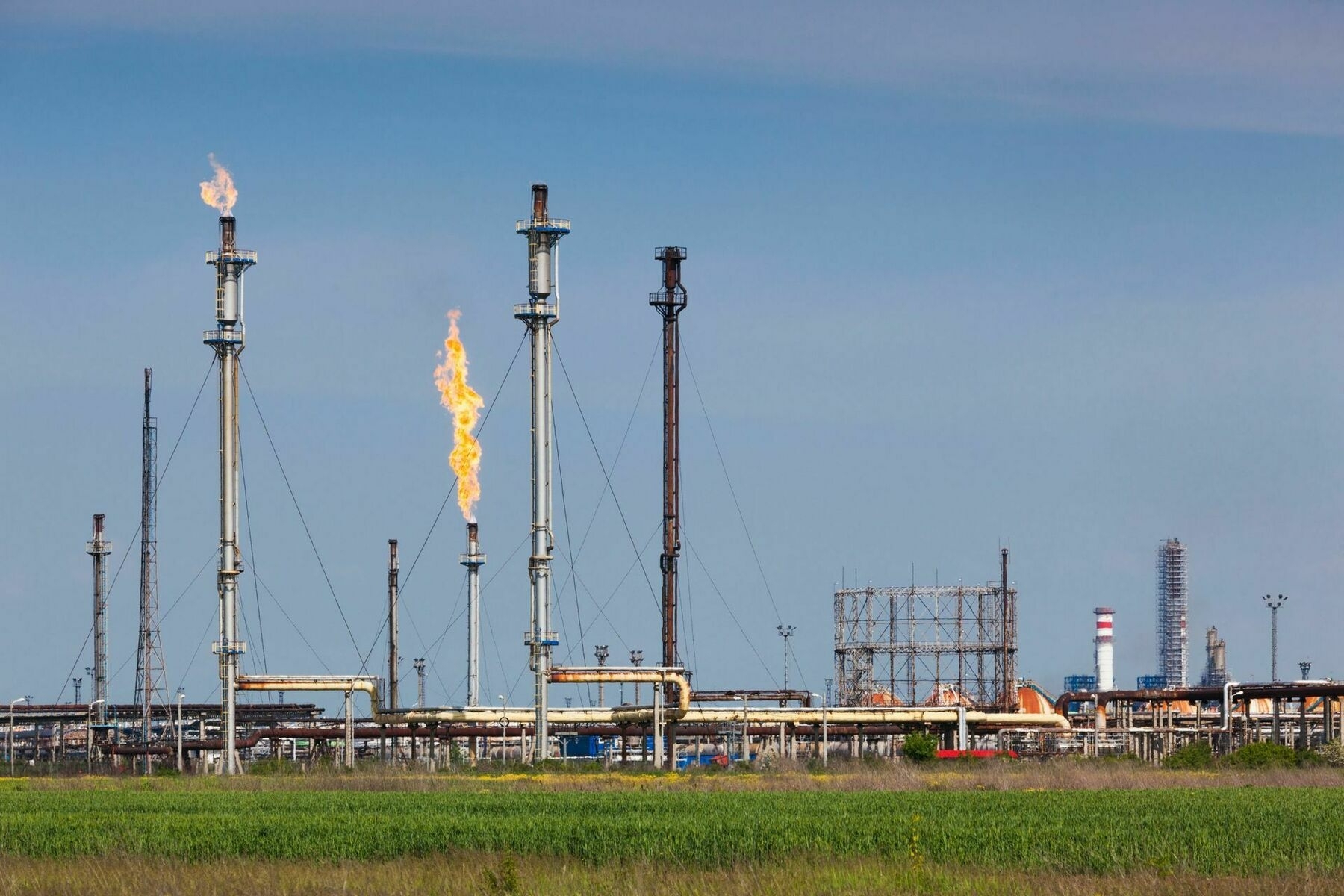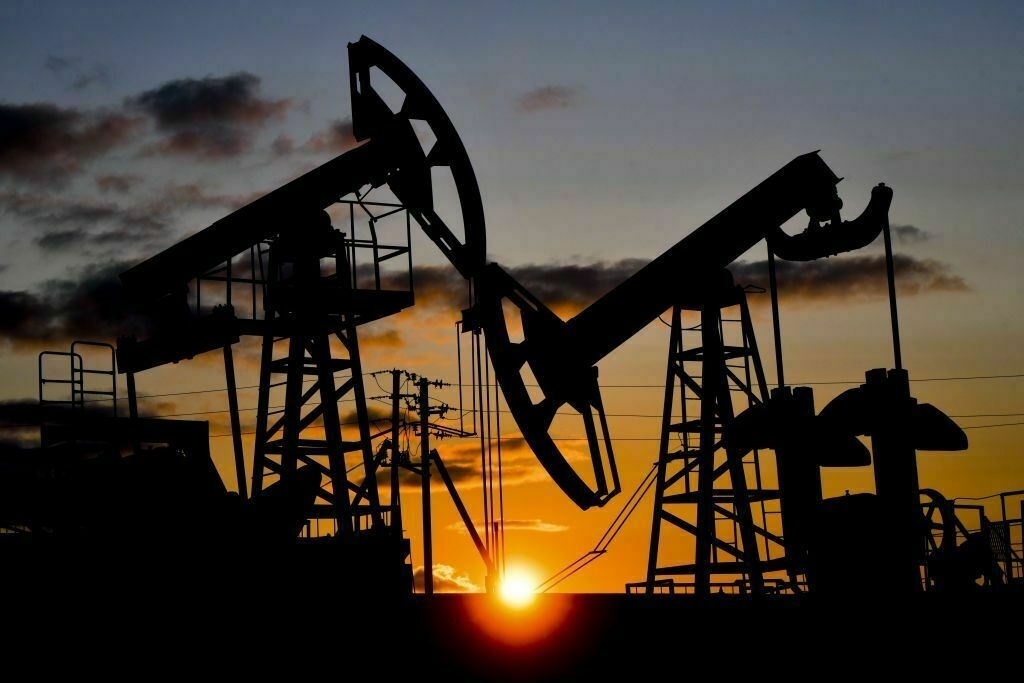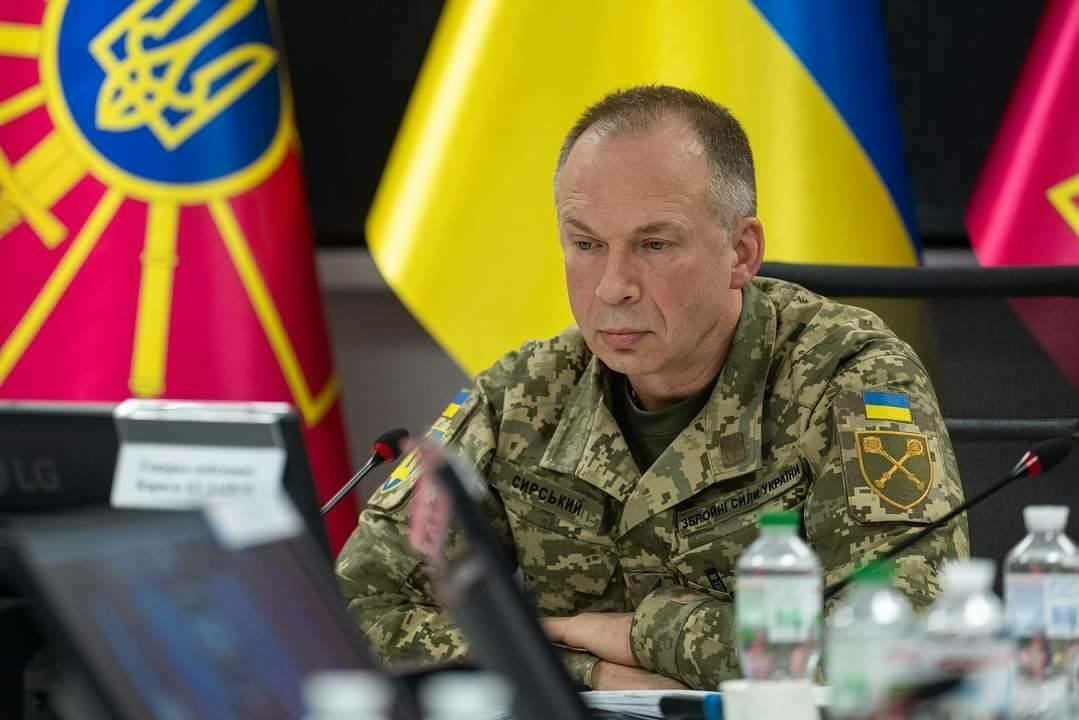-
❗Putin’s NUCLEAR BLUFF is FALLING APART: assessment by Jake Broe – former US nuclear forces officer
-
Watchdog claims Russian troops enter Dnipropetrovsk Oblast, military says attack repelled
“They (Russian troops) are now regrouping for further attempts, but remain positioned in Donetsk Oblast,” said Victor Tregubov, spokesperson of the Dnipro group of forces.
-
Not their war: Who are Ukraine's foreign fighters?
-
❗ Declining demand: why are Russian factories shortening working days? #shorts
-
Russia launches massive drone attack on Ukraine as Trump’s ceasefire ultimatum expires
On the day a ceasefire ultimatum set by U.S. President Donald Trump for his Russian counterpart Vladimir Putin was due to expire, Russia launched a massive drone assault on Ukraine.
According to the Ukrainian Air Force, the overnight attack on Friday, August 8, involved more than 100 aerial weapons, including 104 Shahed strike drones, various types of simulator drones, and 8 high-speed (jet-powered) drones.
The attacks reportedly were launched from Shatalovo in the Smolensk region, as well as from Kursk, Bryansk, Primorsko-Akhtarsk in the Krasnodar Territory, and the annexed Crimea, according to Ukrainian military statements.
Ukrainian forces successfully intercepted or suppressed 82 of these Russian drones across the north, south, east, and center of the country, including three jet-powered and 79 Shahed and other simulator drones. " 26 UAV strikes were recorded in 10 locations, with debris fall noted in 8 locations," reported the Ukrainian military.
One of the targets of the Russian assault was civilian infrastructure in Bucha, Kyiv region. The town's mayor, Anatoliy Fedoruk, reported damage to a kindergarten and seven private homes. He praised the effective work of the air defense forces for taking down most of the attacking drones, and noted that some structures are in need of repair.
"The important thing is that everyone is alive," Fedoruk remarked. He revealed during a news telethon that Bucha was targeted by 10 strike drones.
Separately, the head of the Kyiv Regional Military Administration, Mykola Kalashnyk, reported that three individuals—a 16-year-old girl and two women aged 56 and 80—underwent severe stress reactions due to the Russian attack.
"In the Buchansk district, 21 private houses, outbuildings, garages, two unfinished apartment buildings, and 10 cars were damaged," he wrote on Telegram.
The Russian assault also caused destruction in the Sumy region. Non-residential buildings, a store, and a vehicle were hit in the Sumy community, with a 54-year-old man injured, according to regional head Oleg Grigorov.
In Shostka, strikes from three drones damaged several multi-story buildings, cars, and social infrastructure, Grigorov noted.
Russian drones also targeted Kharkiv, causing a fire at a civilian facility in the Saltivskyi district, the city’s mayor Ihor Terekhov reported.
Simultaneously, drones struck the Odessa region. A sewage pumping station in the Odesskiy district was damaged, stated regional head Oleg Kiper. Additionally, an explosion at a gas station wounded a security guard, leaving him with multiple lacerations on his arm, according to Kiper.
-
US, Russia discuss deal to cement Moscow's hold on occupied Ukrainian territories, Bloomberg reports
-
Ukrainian drones hit Russian cutting-edge radar system in Crimea
Ukrainian drones have struck a state-of-the-art 98L6 "Yenisei" radar system in Crimea. According to open-source intelligence (OSINT) analysts from the project CyberBoroshno, these advanced radar units, which were tested between 2020 and 2021, have been integrated into Russia's armed forces only recently. The attack was part of a series of drone strikes launched by the Main Intelligence Directorate (GUR) of Ukraine’s Ministry of Defense on Russian military positions in the contested region.
The attacks zeroed in on several high-value assets, including radar domes used by the Russian military to protect their radar systems, an assault craft, and an air-defense installation on Mount Ai-Petri. The GUR claimed that a 96L6 S-400 radar had been struck, but CyberBoroshno argues otherwise in their analysis. According to them, the struck object bears hallmarks of the newer 98L6 "Yenisei," a crucial component of the S-500 "Prometey" missile defense system. "An incredibly valuable target hit by Ukrainian UAVs; we believe its use in Crimea alongside the S-400 enhances its strategic significance," they stated.
The 98L6 "Yenisei" radar is instrumental in Russia's cutting-edge S-500 air defense apparatus, designed for tracking ballistic threats. Russian reports suggest it employs a dual-panel design in its radar array, boasting a detection range up to 600 kilometers. Despite the reticent official data revealing neither full production numbers nor pricing, these radar systems remain an exceptionally rare asset within the Russian arsenal.
Footage released by Ukraine’s GUR highlights a targeted assault on Russian military elements in Crimea, featuring an amphibious project 02510 BK-16 craft, radar stations, and an air-defense base.
Previously, on August 7, occupied Crimea experienced a barrage of missile strikes, including Storm Shadow missiles, as Russian Telegram channels reported up to 12 missiles targeting Sevastopol.
Ukrainian OSINT analysts have also been compiling explosion reports, identifying locations such as the Dzhankoy and Krasnogvardeysk regions, along with the cities of Sudak, Belogorsk, Kerch, and Feodosia, as affected by recent strikes.
-
Trump vs Putin: Ultimatum expired, Kremlin silent! Ukrainian strikes on military infrastructure
-
❗Massive strike by Russia: Kyiv region, Kharkiv, Odesa under fire #shorts
-
Ukraine kills 12 soldiers in Russia's Krasnodar Krai, intelligence source claims
-
Ukrainian Military Chief praises operation in Russia's Kursk region for bolstering defense in Donbas
Ukrainian Armed Forces Commander-in-Chief Oleksandr Syrskyi has praised a Ukrainian military operation in Russia's Kursk region as "incredible" and "brilliant." The operation, he claims, was crucial to protecting key areas in the Donbas, including Pokrovsk, which is currently facing the presence of approximately 110,000 Russian troops. Syrskyi dismissed the notion that the focus should have been on bolstering Ukrainian front-line units in the Donetsk region instead. In an interview with TSN, he explained that the deployment of additional brigades in Pokrovsk or Toretsk would not have significantly altered the situation and, in his words, would have "essentially been erased".
"The enemy effectively halted offensive actions in most directions, except Pokrovsk. Our troops were then able to take a breather, as active operations across ten areas paused when the enemy shifted focus to the Kursk direction," Syrskyi stated.
He called the Kursk operation "incredible" and "brilliant." "You remember the difficult situation back then, the moral atmosphere. The enemy was advancing. Our troops' morale was, so to speak, quite low almost everywhere. We weren't attacking and thought we could only defend. Then, we managed to execute that brilliant offensive operation," he recounted. He further explained that the events in Kursk had a direct impact on the situation in the East: "This offensive essentially saved Pokrovsk, Toretsk, Chasiv Yar, Kupiansk, Lyman, and many other directions." However, Syrskyi acknowledged the situation in Pokrovsk as "threatening." He noted that around 110,000 Russian troops and powerful Russian army formations are concentrated near the city. "We're managing to hold the situation...The enemy has changed tactics, changed troop numbers, and deployed armored equipment. We're holding positions, but yes, the situation there is indeed challenging. Still, we're taking all measures to keep the city under control. The enemy is suffering huge losses in Pokrovsk, with the greatest number of attacks occurring there daily," the commander-in-chief concluded.
Reports also indicate that Ukrainian MP Maryana Bezuhla believes the Kursk operation helped Syrskyi secure his position, despite the heavy losses suffered by Ukrainian troops for which no one has been held accountable.
-
Kostia’s last trip.
Editor’s Note: Many members of our team have lost someone from their circle because of the war in Ukraine.
This is the reality for everyone living in a war zone — they carry within them the memory of those who are no longer with us. And our mission is to keep telling you the stories of incredible people: those who stand up to authoritarianism,
and those we can only bring back to life through words.
Support our work so that we never forget those who gave their lives for freedom.
Childhood friends Kostia and Valik have been planning to hitchhike from Ukraine to Cape Roca, Portugal — the westernmost point of Europe — since 2021.
Kostia finally managed to reach the Cape in 2024.
There were some adjustments to the plan, of course, as there often is when traveling. He did it in the company of his mother and aunt, rather than his friend. And instead of transiting their planned route via hitchhiking, they did it by bus.
But most importantly, Kostia wasn’t fully Kostia anymore.
His mother, Olga, scattered his ashes at Cape Roca and in the Boca do Inferno cave during this trip, a few months after he was killed by Russian forces.
Kostia ‘Istanbul’ Yuzviuk died in July 2024 after getting injured by a cluster bomb during a combat mission. He was evacuated to the hospital where his legs were amputated. But his injuries were too severe: his heart stopped.
After his death, his loved ones memorialized him by bringing his remains to more than 15 countries he had on his bucket list – one last final journey.
There’s been too much death in this war. But how we remember is a reflection of how those left behind seek to live.
This generation is trying to break free from the Soviet era, in which commemorative practices were stunted, considered a sort of individualism antithetical to the communist collective. Memorials were prioritized for what they considered heroes of the nation, instead of regular individuals. These memorials were impersonal; they glorified the state over any personal tragedies behind the deaths.
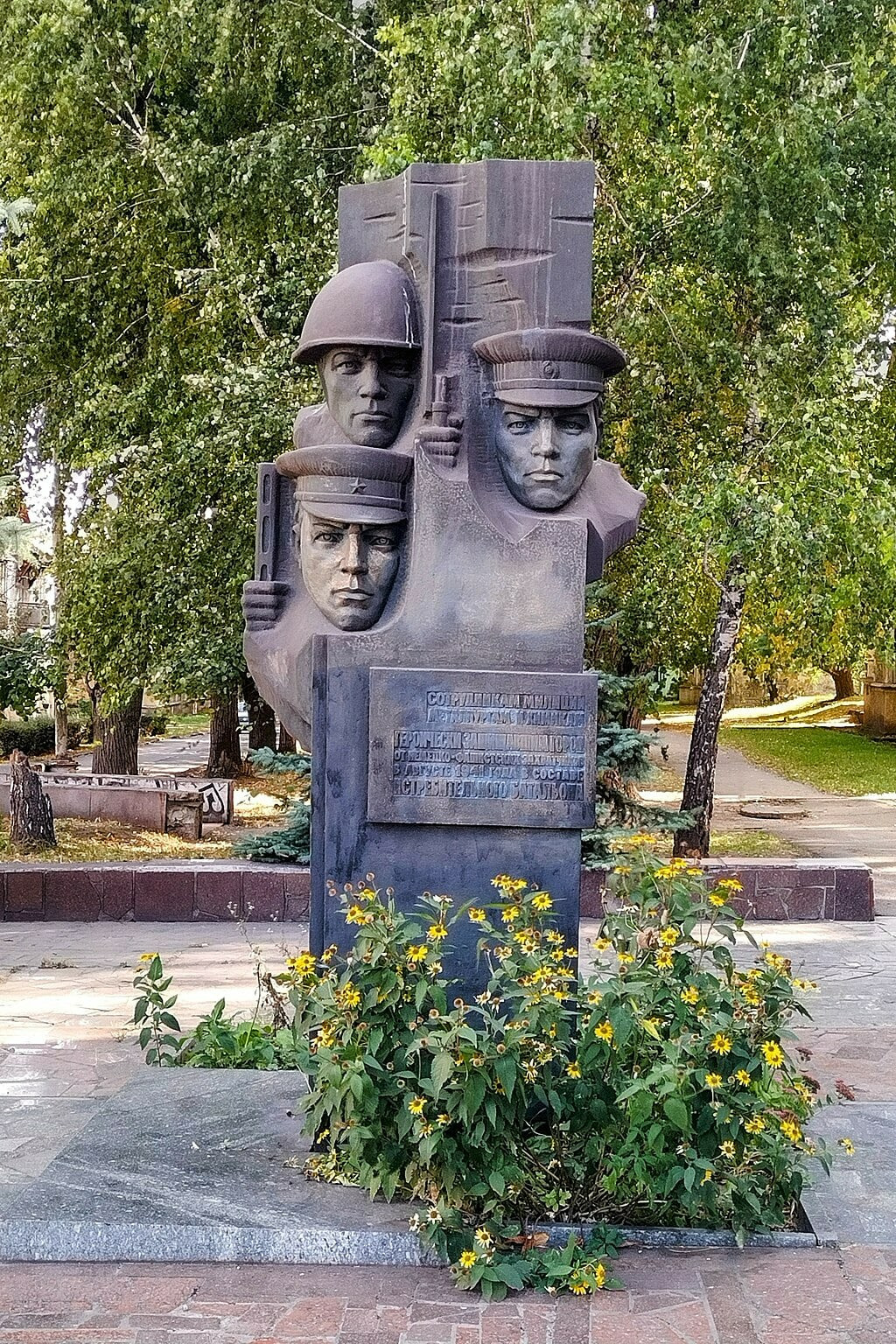
Photo of a Soviet monument dedicated to the heroic defenders in Kamianske. Photo from Wikipedia. The old Soviet commemoration tradition depicted its heroes in a grand way, but it created standoff distance. They were so idealized and perfected that people struggled to connect with and relate to them.
Now, Ukrainians are not losing distant heroes; they are losing loved ones, and they want to memorialize them in a manner befitting the individual dignity that is the cornerstone of democracy.
Since the war began, Ukrainians have gotten used to waking up to the cruel news that a loved one had died. This is what happened to Kostia’s family a year ago. Since then, they began to find ways to commemorate him in the way he would have most liked.
Kostia ‘Istanbul’ Yuzviuk was a Ukrainian soldier, activist, and vegan — a beloved friend, son, and brother who inspired those around him. Known among friends as “the best Ukrainian,” he stood out for his sincerity, perseverance, and lifelong dedication to social and political causes.
He went by the call sign ‘Istanbul’ because an ancient name of the city, Constantinople, sounds similar to Kostia.
Kostia wrote his will in the fall of 2022. So when he died, his friends followed his last wish as much as they could.
Several hundred people drove from different cities in Ukraine to say their final goodbyes to Kostia. The ceremony took place at the main square of Kostia’s hometown, Rivne. Everybody wore traditional Ukrainian clothing, which included Vyshyvanka shirts or military uniforms.
If it wasn’t for the coffin located at the centre or the tears in people’s eyes, one could have thought it was a celebration of Ukraine.
As Kostia wrote in his will: “If you want to come and spend some time, take some white kvass [Kostia’s favorite non-alcoholic beverage] and go somewhere to the shore/mountain/sunset, and you can talk alone, I'll listen to you with my kvass.”
So white kvass was given to every guest. In addition, almost every person there did 23 push-ups to commemorate Kostia, as he had been 23 years old.
Later that evening, there was an auction to raise funds for Ukraine’s Armed Forces, where vegan food was served. He even asked in his will to make some jokes about that:
“Make a few memes like ‘He died because he didn't eat meat’ or ‘If he had eaten meat jelly, he would have survived.’ Relatives will appreciate it.”
In the two weeks after his death, they have raised more than 2 million hryvnia, equivalent to $48,000 USD.
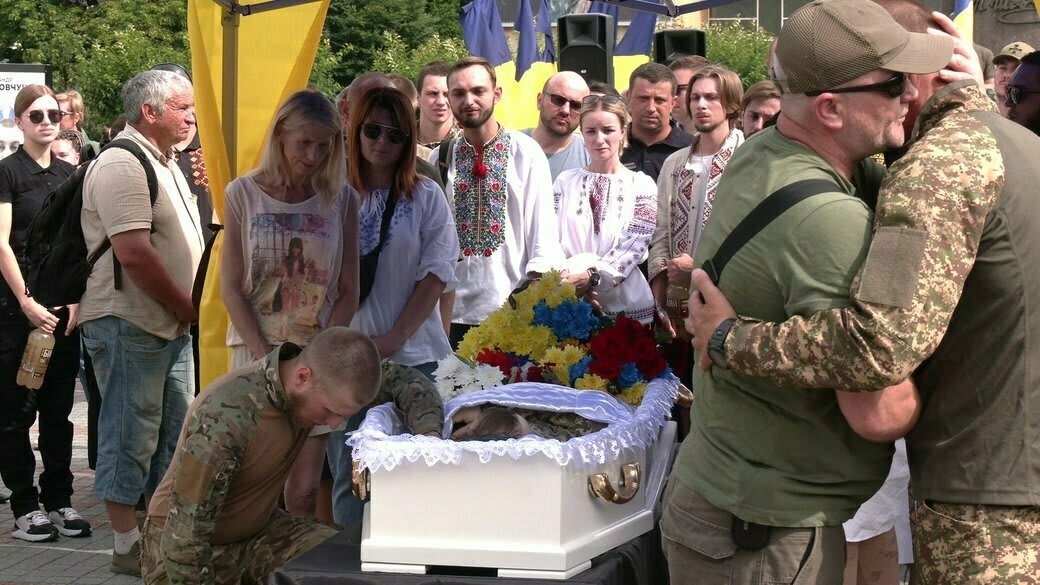
Kostіa’s funeral. Photo by Suspilne Rivne. The goal of commemoration is to tell the story of the person who is no longer with us. Instead of setting up bronze monuments, relatives find ways to illustrate the unique character of the deceased: interests, hobbies, dreams and struggles.
An example is the story of a bookstore in Vinnytsia, located in central Ukraine, that opened in commemoration of Mykola Rachok, a journalist who died fighting in the war. One of his dreams was to open his bookshop.

The bookstore ‘Heroii’ (In English, ‘Heroes’) opened in commemoration of Mykola Rachok in Vinnytsia. Photo: chytomo.com Victoria Zamchenko, a sommelier at the Goodwine chain of alcohol stores, was pregnant when she and her husband were killed by a drone attack in their Kyiv apartment on October 17th.
Months later, Goodwine and Ukrainian winemaker Serhii Stakhovsky planted a wine grape to pay their respects to Victoria. When the first harvest takes place in 2028, all the proceeds from the sales will be sent to the Victoria Fund, which helps young Ukrainian families.

A vineyard in commemoration of killed sommelier Victoria Zamchenko. Photo: victoria.goodwine.ua Campaigns have become a common way to remember the deceased during the war. In August 2023, on the Day of Remembrance of the Fallen Defenders of Ukraine, about 100 cafes and restaurants in Ukraine set one table aside to be decorated with sunflowers. Each visitor could then write on a card the name of a loved one who had passed away.
The campaign is called ‘Table of Remembrance’ and it has become a tradition in Ukrainian culture. Last year, more than 1,000 restaurants and cafes joined the initiative.
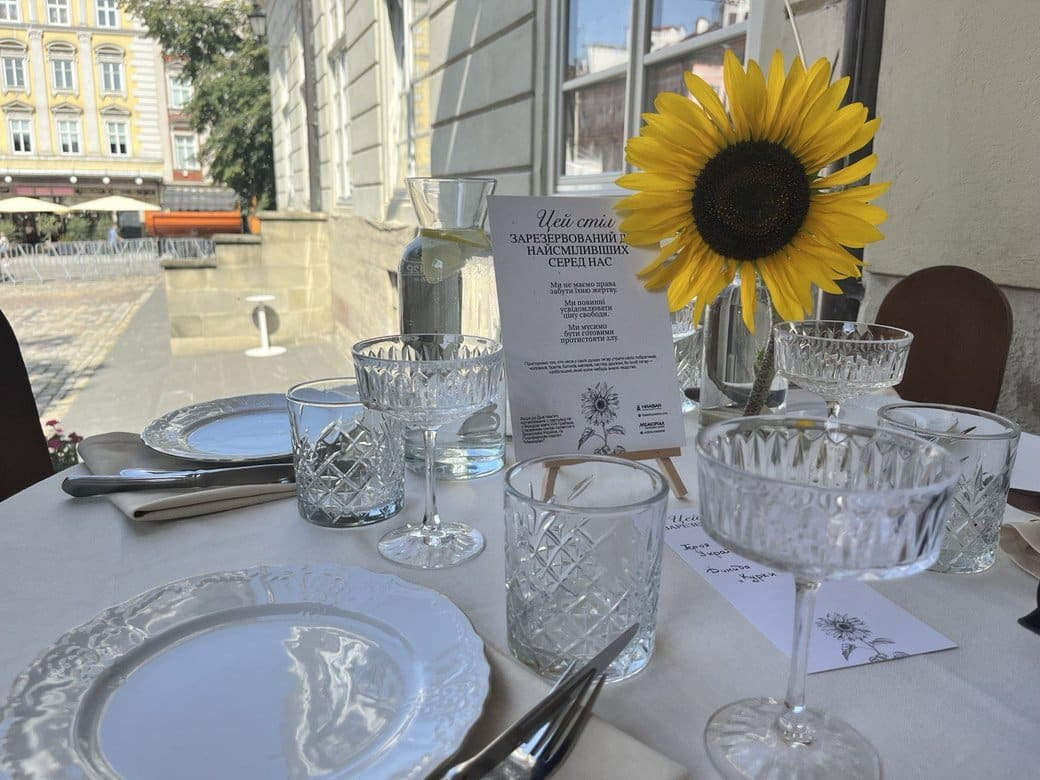
A table reserved for fallen soldiers in one of Lviv's cafes, August 29, 2024. Photo by Suspilne Lviv/Ivanka Dusko. All of these commemoration styles have the same goal: to show people that the entire Ukrainian society is standing by them in their grief.
“It is an opportunity to show each other that we care and that we do not want to turn away from other people's pain,” curator of the culture of memory platform ‘Past / Future / Art’ Oksana Dovgopolova said. “It allows us, as a society, to generate resources to endure this pain, to heal these wounds, to move forward.”
Olga, Kostia’s mother, still remembers July 18, 2024. She rushed to Zaporizhzhia to see her wounded child. But she was too late. Her grief grew when she recalled that her son had asked in his will to be cremated.
"When Sasha (Kostia's girlfriend) told me that Kostia wanted to be cremated. I started hysterically screaming, ‘Leave me my child, I want to bury him so that I have a place to come and talk to him,” she told The Counteroffensive.
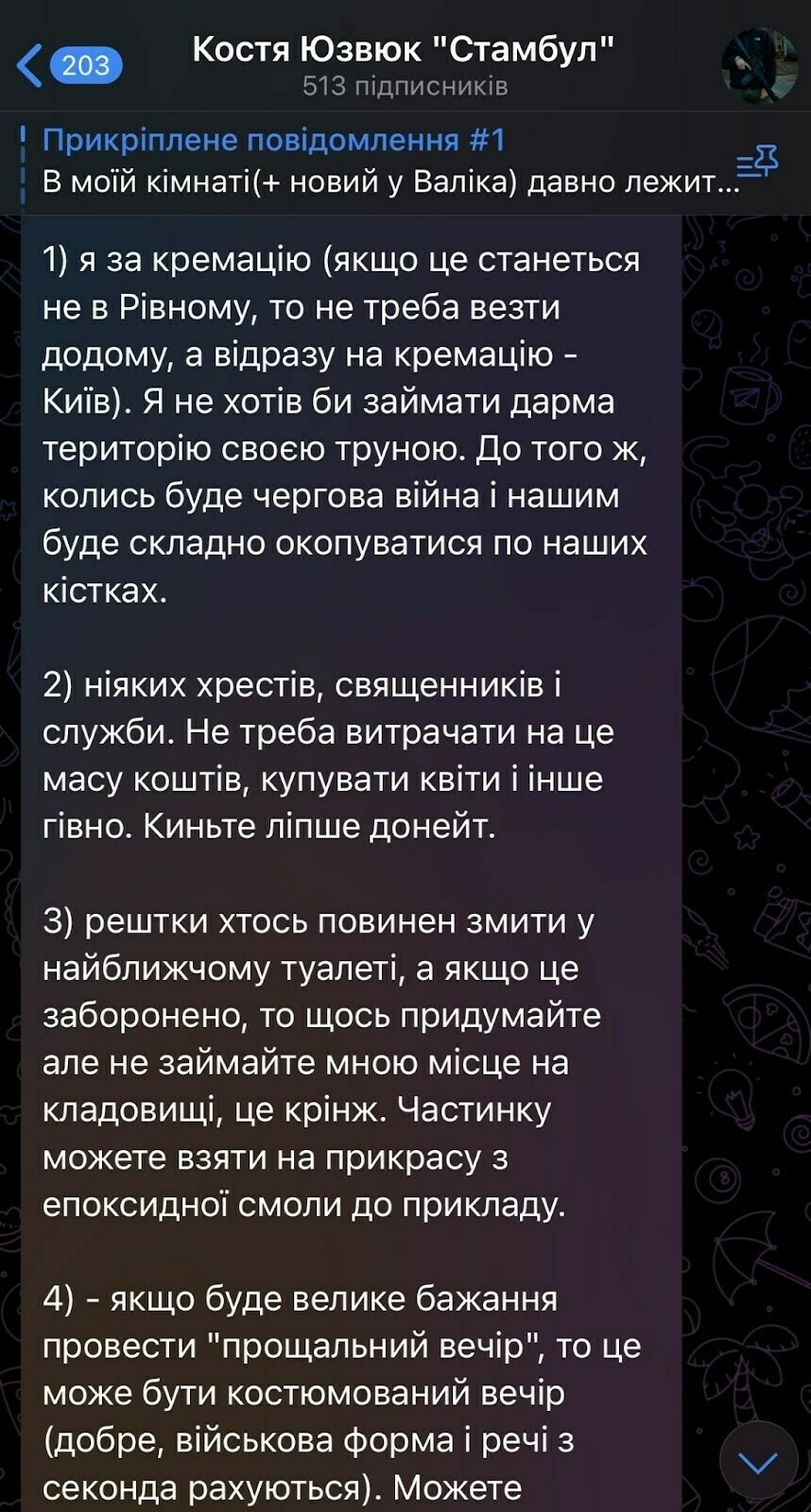
Part of Kostia’s will. Screenshot from Kostia’s Telegram channel. "Don't take up space in the cemetery with me," he asked, in addition to asking for a costume party if loved ones wanted to commemorate. Yet, she shortly realized that she had to fulfill her son’s last wishes. After saying her final goodbyes in Rivne, Olga got Kostia’s body cremated as he asked in his will:
“I am in favor of cremation (if it happens outside of Rivne, please do not bring me home, but take me directly to cremation in Kyiv). I would not want to take up space with my coffin. Besides, there will be another war someday, and it will be difficult for our people to dig themselves in with our bones.
…
Someone should flush the remains down the nearest toilet, and if that is prohibited, then think of something else, but don't take up space for me in the cemetery, it's cringe.”
His friends and family thought they could do slightly better. Everything ends up in the ocean eventually anyways.
Olga received many messages from his old friends, offering to scatter his ashes in places he had been or that he wished to visit.
So that’s how Kostia ended up on one final trip, spanning continents and time zones. His ashes ended up scattered in Portugal, Italy, Spain, Sweden, Cyprus, Lithuania, Estonia, Ukraine, and even over the English Channel and at the Burning Man festival in Nevada.
The privilege that Ukrainians have right now — the ability to personally honor those who died — emerged only after the collapse of the Soviet Union. For decades, civilians who died in tragedies such as the Holodomor, Chornobyl, and World War II were not given the goodbye they deserved.
Kostia’s family and friends were not going to let that happen to him.
For now, they continue honoring him by preserving his work: to fight for a free Ukraine by raising funds for the army.
Last year, Olga raised funds for a refrigerated bus, nicknamed ‘Istanbul,’ to bring fallen soldiers home from the front line.
A year after his death, Kostia’s name continues to travel with Ukrainian soldiers.
NEWS OF THE DAY:
By: Sofia Konoplytska
Good morning to readers; Kyiv remains in Ukrainian hands.
UKRAINE HONOURS MURDERED JOURNALIST: Today at 12 PM in central Kyiv, a public funeral was held for Victoria Roshchyna, a Ukrainian journalist who died in Russian captivity.
Victoria went missing in August 2023 while investigating war crimes committed in Russian-occupied Ukraine. She died in September 2024, at the age of 27. Her body was only returned in February 2025 — marked as an "unidentified male", and only confirmed to be her with DNA testing.
Examination revealed clear signs of torture. Several organs, including brain and eyes, were missing, suggesting an attempt to hide the cause of death.
On June 7, Ukrainian prosecutors formally charged the head of SIZO-2 (Taganrog detention center) — alleging he personally ordered her torture and murder.
President Zelensky posthumously awarded Victoria the prestigious Order of Freedom.
HOW RUSSIA TRAFFICKS UKRAINIAN KIDS: Authorities in Russian-occupied Ukraine have set up an online platform that displays abducted Ukrainian children in a searchable catalog, allowing users to filter them by physical features such as eye or hair color.
The practice allows for organised child trafficking under the guise of adoption. The database lists 294 children, many of whom were born in Luhansk Oblast before Russia’s occupation and held Ukrainian citizenship. According to Ukrainian children’s rights advocate Mykola Kuleba, some of the children lost their parents at the hands of occupation forces, while others were forcibly given Russian citizenship to legitimize their abduction.
Ukraine has confirmed over 19,500 child abductions since the full-scale invasion, though officials believe the true figures to be far higher..
The Russian-run site presents the children as “orphans” or “left without parental care”, listing their photos, age, and personality traits, some labeled “obedient” or “calm”. Kuleba compared the descriptions to a slave catalogue. The dangers these children face include sexual and organ trafficking.
The return of all deported children remains one of Kyiv’s key demands in negotiations with Moscow — and one that Russian officials have openly mocked in the past.
INDIA HALTS U.S. ARMS DEALS: India has paused plans to buy new U.S. weapons and aircraft amid rising tensions after President Trump imposed new tariffs on Indian exports in response to its Russian oil purchases.
The move signals growing discontent with Trump’s actions, disrupting arms deals, including a $3.6 billion Boeing P8I aircraft contract, and discussions about India purchasing U.S.’s Stryker vehicles and Javelin missiles, according to Reuters.
While India remains open to reducing Russian oil imports and deepening Western partnerships, domestic politics and tariff pressures complicate the shift.
DOGS OF WAR:
Today’s dogs of war are these two puppies Veronika spotted in Lviv.
They look like they are on a cute little puppy date.
Stay safe out there.
Best,
Tanya -
How Russian propaganda used anti-corruption protests in Ukraine to spread disinformation
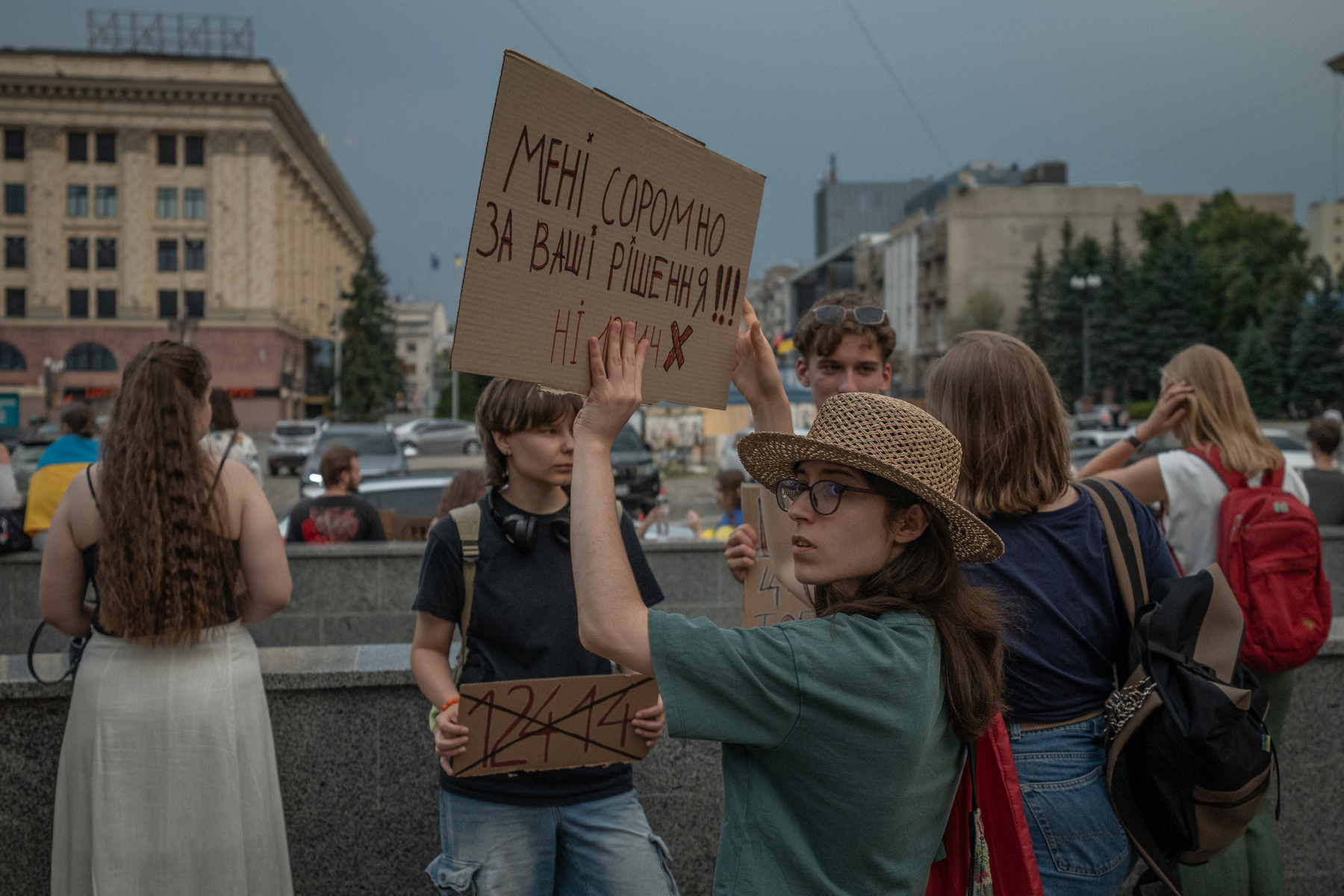
After Ukraine’s Parliament adopted bill #12414 limiting the independence of anti-graft bodies, NABU and SAPO, people across Ukraine went out to protests. On the same day, Volodymyr Zelenskyy signed the bill, despite many asking to veto it. These events became a major topic of discussion for pro-Kremlin media and other online sources from June 22 to June 33.
Ukraine’s main intelligence agency (HUR) warned that Russia might use its resources and disinformation networks to “increase the level of protests, deepen polarization and chaotization of Ukrainian society and, as a consequence, make (the state — ed.) lose its resilience during an existential war.”
Manipulative messages went through pro-government media, anonymous Telegram channels, and Kremlin-linked propagandists, aimed at corrupting the meaning of democratic processes in Ukraine and promoting Russia’s geopolitical goals.
Gwara Media’s fact-checking department researched how exactly anti-corruption protests in Ukraine became a target for a Russian information attack and which disinformation narratives were promoted in the campaign.
Channels used to spread the disinfo
Traditionally, the Kremlin propaganda network reacts quickly to internal events in Ukraine that can be interpreted as signs of instability, societal dissent, or disappointment. Protests starting on July 22, 2025, in Ukraine became an occasion like that. A few hours following the first protests in Kyiv and Lviv, pro-Russian press, Telegram channels, and bot farms launched a wave of manipulative messages.
Main platforms to spread these messages were:
- Anonymous Telegram channels such as “Legitimate,” “Residents,” “ZeRada,” and so on. They were posting messages like “Protests are a consequence of Zelenskyy behaving like a dictator” or “Law #12414 is a step toward democracy. People have rebelled, and the army may pick their side.”
- English-language media and bloggers spread pro-Russian narratives. The Gateway Pundit, Redacted, InfoBrics, and The Grayzone’s articles said “Ukraine became an authoritarian state where dissidents are repressed,” linking to the comments of Marjorie Taylor Greene.
- X accounts in social media, Russian Market, AmericaPapaBear, and UkraineTruthDaily, along with pro-Kremlin YouTube and TikTok accounts published protest videos taken out of context with hashtags #ZelenskyDictator, #UkraineProtests, #WeWantPeace. These hashtags were then used to create an appearance of the “anti-war” movement in Ukraine — Russian troll farms often use this narrative to prop up the image of “war fatigue” in the country.
All of those resources began to construct a twisted information landscape, in which Ukrainians supposedly “rebelled against Zelenskyy’s dictatorship.” The real meaning of the protest — the protection of the anti-corruption system and its independence — was ignored or distorted.
False narratives about protests
Narrative #1. “Ukraine rebelled against Zelenskyy, not for reforms.”
Messages like these aimed to convince people that the protests were directed specifically against Zelenskyy, not the bill — and then the law — that he and the Parliament have supported. It was done to spread distrust to the authorities’ legitimacy and destroy their support.
In particular, pro-Russian Telegram channels called “Resident,” “Legitimacy,” “Truha LIve” used the phrases like “Zelenskyy’s fear,” “People have taken to the street against the dictator,” “New maidan,” and so on.
Narrative #2: “The West is keeping silent about protests in Ukraine.”
These were messages about European and American media supposedly “keeping silent” about the protests because covering them “isn’t beneficial.” Posts with messages like “BBC is silent,” “CNN won't show that” spread on X. Authors also said that NATO “forbade” Western media to broadcast the protests in Ukraine.
As such, in Russian Market’s X post that gained up to 250,000 views, there’s a message that NATO issued a “ban” on the most prominent western media to show anti-corruption protests in Ukraine. That statement was debunked by NATO’s spokesperson in a comment to AAP FactCheck.
Apart from that, in the post, the Ukrainian protests are compared with the Tiananmen Square protests in China. Back then, student protests of 1989 grew into anti-government protests and then a massacre by the People's Liberation Army.
Western media, particularly the BBC and CNN, mentioned in a post, weren’t actually silent about the protests. They informed people about the situation in Ukraine right up until July 31, when Ukraine’s parliament adopted and President Zelenskyy signed into law that restores independence of anti-corruption agencies.
Ukrainian media mostly didn’t adopt manipulative narratives which didn’t allow for the disinformation to spread into the mainstream.
Andrii Yanitskyi, journalist and the head of “ProMedia” NGO, said to Detector Media about the role of media covering the protests:
“It’s a challenging task, because it’s necessary to be a facilitator of democracy and realize that the country is at war, which is why hype and speculations can have negative consequences. I don’t agree that the media have to avoid certain topics or self-censor, no. But the way they convey information matters, so it’s necessary to be socially responsible. I think quality content producers (for instance, media that the IMI whitelisted) are experienced enough to hold this balance.”
Narrative #3. “Protesters demand peace with Russia.”
Posts about participants of the protests “taking to the streets” not against corruption, but to demand to “stop war” and make a peace deal were shared by pro-Russian channels to legalize the thesis, “Ukrainians are tired of war.” This message was propped by Marjorie Taylor Greene, who published the following post on July 23:
“Huge protests erupt in Kyiv against Ukrainian President Zelensky as he is a dictator and refuses to make a peace deal and end the war. Good for the Ukrainian people! Throw him out of office! And America must STOP funding and sending weapons!!!”
This message from Congresswoman echoes the pro-Russian statements. In the past, foreign media and analysts (Newsweek, Guardian, Washington Post) described her as “Russian state media’s sweetheart” because she is regularly quoted in Russian spaces online.
Green multiple times called (archive) for a stop of American aid to Ukraine. She also promoted the narrative that Ukraine provoked a Russian invasion, “making alliance with the West.” In 2024, Green proposed a series of amendments to the bill for aid to Ukraine, in which she demanded to not allow the money to be spent until “free and fair elections” will be held in Ukraine.
Narrative #4. “Ukraine is a dictatorship.”
During July 24-28, content tagged with #ZelenskyDictator was actively shared on social media. Accounts on X and TikTok published the same messages in English, targeting audiences in the UK and the US.
These accounts spread information on Zelenskyy, who was supposedly “cracking down on dissent, opposition, and citizens’ protests.” Equating Ukraine with an authoritarian regime, they aimed to distort the trust of Ukraine’s allies.
Gwara Media’s fact-checkers, for instance, debunked a fake that an activist who brought a dog to the protest has been charged with animal cruelty. The “news” said that the case was supposedly opened because of an activist's sign that called Zelenskyy a dog.
The Institute for the Study of War (ISW) said that Kremlin officials, propagandists, and mouthpieces have weaponized these protests to advance existing Russian narratives designed to portray the Ukrainian government as corrupt and illegitimate to discourage Western support for Ukraine.
“The ongoing Ukrainian protests are notably not anti-war demonstrations, but Russian commentators are trying to paint them as protests against Zelensky and Ukraine's war effort to accomplish informational effects that will generate benefits for Russian forces on the battlefield,” the ISW said.
The messages spread by pro-Russian sources about the “complete failure of anti-corruption politics” and “dictatorial leadership” aimed to strengthen polarization and weaken the trust in reforms needed for Ukraine’s accession to the EU. If anything, the EU’s representatives echoed the protesters, saying that reforms and independence of anti-corruption institutions are necessary.
So, the Kremlin tried to masquerade internal societal processes in Ukraine with a twisted picture of chaos to dissolve international support for Ukraine. Head of the Foreign Intelligence Service of Ukraine, Oleh Ivashchenko, says that Russia used and will use any occasion to destroy unity and discredit Ukraine, especially on the international stage.
“I communicate almost daily with the heads of partner special services on joint counteracting Russia’s aggression. Colleagues point to the importance of maintaining the phenomenal level of consolidation of Ukrainian society, which we have shown during these years of war.”
Author: Olga Yakovleva
Cover credit: Protest against bill #12414 in Kharkiv on July 30 with a sign "I am ashamed of your decisions" / Liubov Yemets, Gwara Media




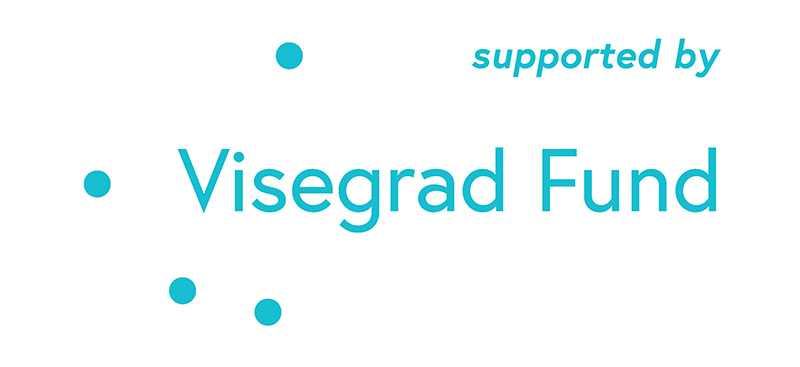
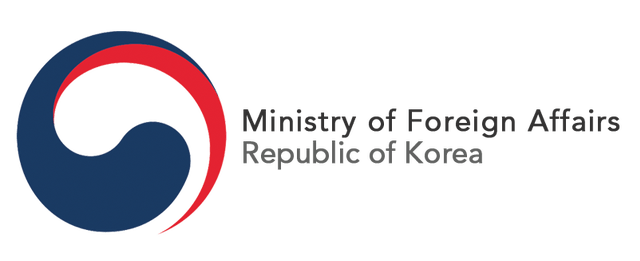
The project is co-financed by the governments of Czechia, Hungary, Poland and Slovakia through Visegrad Grants from the International Visegrad Fund. The mission of the fund is to advance ideas for sustainable regional cooperation in Central Europe.
The project is supported by the Ministry of Foreign Affairs of the Republic of Korea.
The post How Russian propaganda used anti-corruption protests in Ukraine to spread disinformation appeared first on Gwara Media.
-
💥 $500 million for weapons for Ukraine | Secret negotiations between Putin and the USA
-
Kyiv holds farewell for journalist tortured, killed in Russian captivity
-
Putin holds calls with key allies Xi, Lukashenko ahead of Trump summit
-
Poland's Tusk says Russia-Ukraine war could be frozen 'sooner rather than later'
-
Romania reportedly suspects Russian sabotage behind Azeri crude oil contamination
-
Russia reportedly shifts oil exports to China after Trump's India tariffs
-
Ukrainian drones strike 23,000 targets in July, kill 5,000 Russian troops, military chief says


